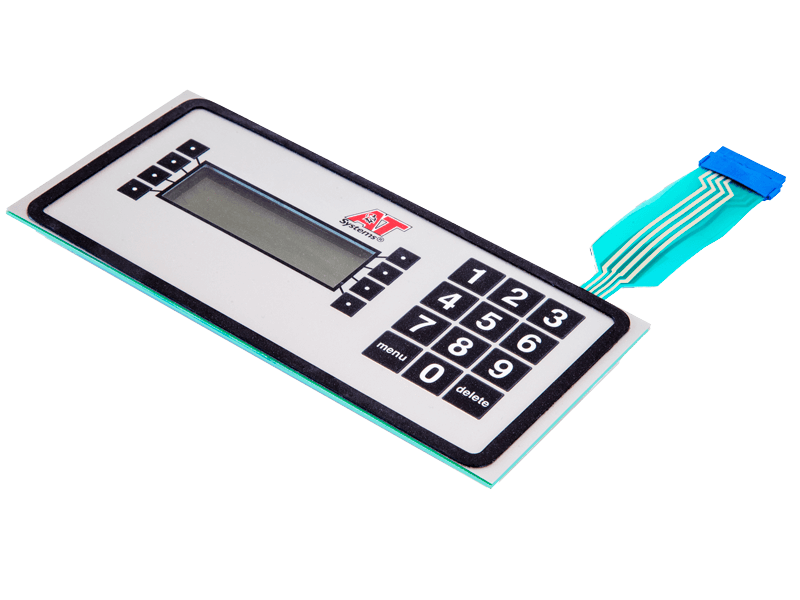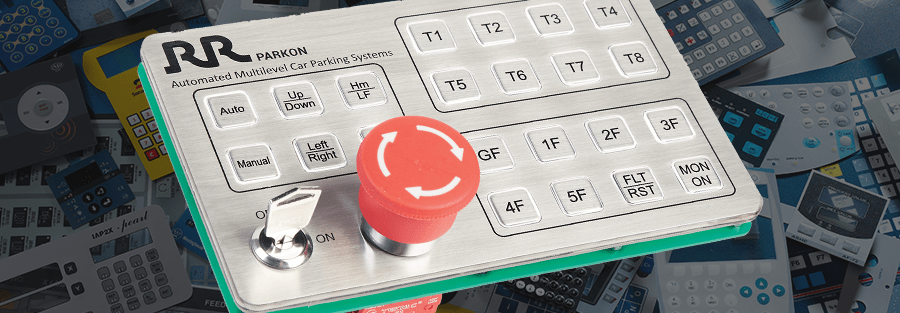Discover the Future of Control Interfaces: Why Membrane Layer Switches Are Gaining Appeal
As markets progressively prioritize effective and easy to use control interfaces, membrane buttons are arising as an engaging remedy that incorporates capability with style versatility. With the increase of wise technology and sustainability issues, the capabilities and developments bordering membrane layer switches over warrant better assessment.
Comprehending Membrane Layer Switches
Membrane buttons are integral parts in modern-day digital gadgets, acting as interfaces between machines and individuals. These switches contain numerous layers, generally consisting of a visuals overlay, a spacer layer, and a circuit layer. When an individual presses a button on the overlay, the top layer reaches the circuit layer, finishing a circuit and sending a signal to the device. This simple yet reliable system permits smooth interaction with technology.

Resilience is another vital attribute, as membrane switches can be made to withstand environmental variables such as wetness, dust, and chemicals. This strength makes them suitable for applications in extreme conditions. On the whole, recognizing the structure and feature of membrane layer switches is essential for valuing their function in the evolution of customer interfaces in today's technology-driven world.
Key Benefits of Membrane Layer Switches
Offering an array of advantages, membrane buttons have come to be a favored option in various applications (Membrane Switches). Among the main advantages is their compact layout, making it possible for manufacturers to optimize space in devices without endangering performance. Membrane layer switches are light-weight, which is especially valuable in mobile digital devices

In addition, these switches give exceptional durability. Created from flexible materials, they are immune to dirt, moisture, and a range of ecological elements, making them ideal for rough conditions. This longevity typically converts right into a much longer life-span contrasted to traditional mechanical switches.
Moreover, membrane switches permit for seamless integration of symbols and graphics, offering visual adaptability and boosting customer experience. Modification alternatives are considerable, making it possible for brand names to develop distinct interfaces that align with their product identity.
The flat surface of membrane layer changes prevents the build-up of dirt and gunk, making them perfect for sanitary environments. Membrane layer switches are economical, as they can be produced in high volumes at reduced expenses, making them accessible for a large range of markets.
Applications Across Industries

A myriad of sectors are increasingly adopting membrane switches because of their adaptability and performance. These manage user interfaces are specifically prevalent in the automotive sector, where they are used in dashboards and infotainment systems, providing a easy to use and sleek interface. In the clinical field, membrane layer switches promote the operation of analysis tools and client monitoring systems, making sure integrity and simplicity of usage in vital scenarios.
Additionally, the customer electronic devices industry benefits from membrane layer buttons in tools click here now such as microwaves and remote controls, permitting structured layout and enhanced toughness. Membrane Switches. The aerospace sector also uses membrane buttons in cabin controls, where space constraints demand small and effective design services
Furthermore, the industrial industry utilizes membrane switches in equipment control panels, using durability against extreme atmospheres and guaranteeing functional performance. Retail atmospheres have embraced membrane buttons in point-of-sale systems, improving user interaction while maintaining visual allure.
Style Fads in Membrane Layer Switches
Advancing together with technological advancements, design fads in membrane layer switches are significantly focused on enhancing individual experience and aesthetic allure. Modern membrane buttons are being created for simpleness and user-friendly usage, enabling users to browse interfaces effortlessly. This shift towards user-centric layout highlights responsive comments, ensuring that individuals get prompt confirmation of their actions.
In addition, adjustable graphics and shades are becoming basic functions in membrane button layouts. This flexibility enables manufacturers to produce tailored user interfaces that line up with branding and specific user requirements. The unification of backlighting is another popular fad, as it not only enhances exposure in low-light problems yet additionally adds a visually striking element to the overall style.
This change not only enhances visual appeals yet also adds to the total performance and durability of the switches. These layout trends collectively emphasize the growing value of incorporating form and feature in the growth of membrane buttons, inevitably enriching the individual experience.
Future Expectation for Control Interfaces
The future of control interfaces is poised for considerable transformation as emerging modern technologies remain to reshape individual communications throughout various gadgets. The combination of innovative materials, such as flexible electronics and conductive inks, will certainly enhance the adaptability and capability of membrane layer buttons, making them increasingly adaptable to a variety of applications. Furthermore, the surge of the Net of Points (IoT) will drive demand for more intuitive, easy to visit here use user interfaces that can flawlessly incorporate with clever devices.
As expert system and artificial intelligence advance, regulate user interfaces will likely include even more tailored attributes, permitting individuals to engage with tools in means that are customized to their choices and routines (Membrane Switches). This change in the direction of user-centric style will position membrane switches as a key player on the market, especially in fields like medical care, auto, and customer electronic devices
Furthermore, the promote sustainability will motivate manufacturers to check out environmentally friendly products and manufacturing techniques, making certain that the future of control interfaces lines up with ecological factors to consider. In general, as modern technology remains to development, membrane layer buttons will end up being progressively Resources innovative, leading the way for ingenious control options that boost user experience and operational efficiency across varied markets.
Verdict
In conclusion, the increasing adoption of membrane switches highlights their importance in the development of control user interfaces. Their portable layout, longevity, and customization options align with the demands of modern innovation throughout numerous sectors. As straightforward user interfaces come to be necessary in the context of IoT and AI innovations, membrane layer buttons are positioned to play an important function. The continuous patterns towards sustainability even more enhance their allure, ensuring that membrane layer buttons will remain integral to future technical technologies.
As markets increasingly focus on effective and user-friendly control user interfaces, membrane buttons are emerging as an engaging service that combines performance with design versatility.Resilience is an additional essential attribute, as membrane buttons can be designed to withstand environmental aspects such as dampness, dust, and chemicals.Advancing alongside technical advancements, style fads in membrane buttons are increasingly concentrated on boosting user experience and visual allure. Modern membrane switches are being made for simplicity and user-friendly usage, allowing individuals to browse interfaces effortlessly. These style fads collectively highlight the expanding importance of integrating kind and function in the growth of membrane switches, eventually improving the user experience.
Comments on “Check out the Importance of Membrane Switches in Streamlining Tool Controls”